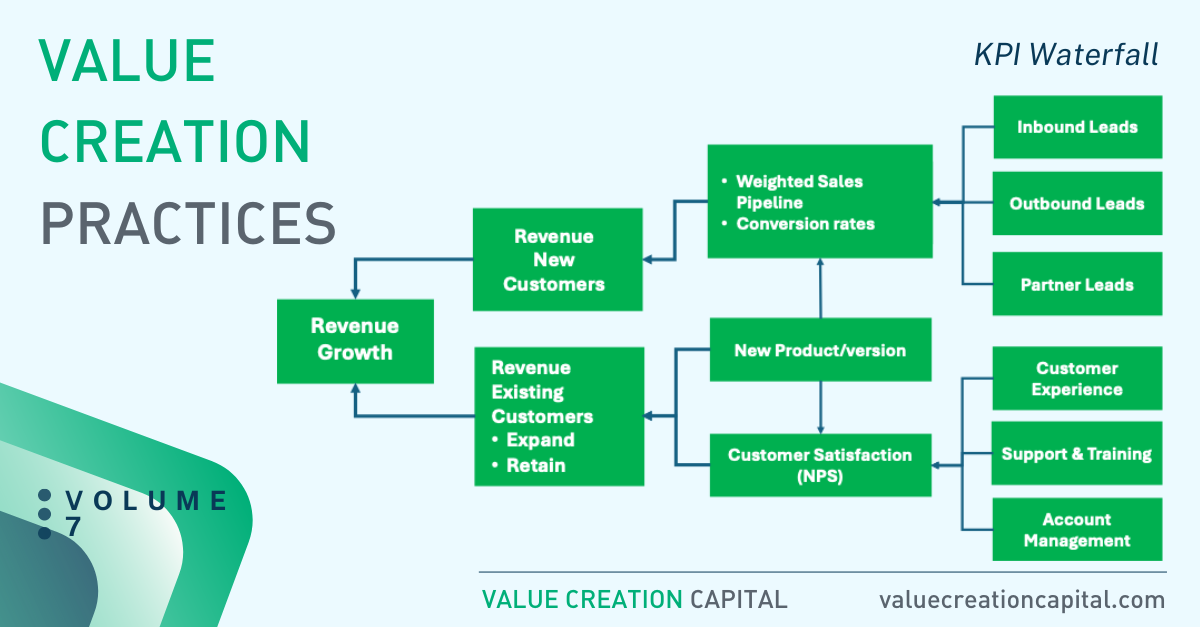How to connect Strategy to your Team Members

One of the critical processes of People Management is alignment within the team and organization. In other words: how can we connect the company strategy to the contribution of an individual team member?
A very effective tool for this is the KPI waterfall. This is a causal model with the critical organization objective as the output (e.g. revenue, MRR or gross margin) and the needed actions and their results as input.
Of course, this model is a simplification of real life. Nevertheless, it shows the most important value drivers of the company – in our case a software company. Revenue growth has two sources: new customers (applicable to most startups) and existing customers. In case of the latter, revenue is generated through managing a low churn whilst increasing cross- en upselling.
My observation is that most startups keep focusing on acquiring new customers, and often overlook the revenue opportunities with their existing customers. Retention of customers can largely be influenced by training, supporting usage of the application, building a relationship beyond your offering and by continuously improving customer experience of your total offering.
The company could also use multiple sources for new customers. Lead generation by conversion on your website (inbound), campaigns and using ads for outbound leads and leads generated by partners are the most common ones.
Regular use of this causal model has three distinct benefits:
- It provides all team members a clear overview and insight of how the business is progressing, but also on the bottlenecks and pain points that need to be solved.
- It is a great way of aligning all the team’s efforts to the company’s objectives and targets, besides showing each team member’s contribution.
- The usage of these kind of models will give the opportunity to reach more mature stages of performance management. Moving from retrospective financial data to more forward-looking data, includes non-financial data too. This gives an overview of the needed actions. And managing different actions and team results will ensure a more predictable outcome.